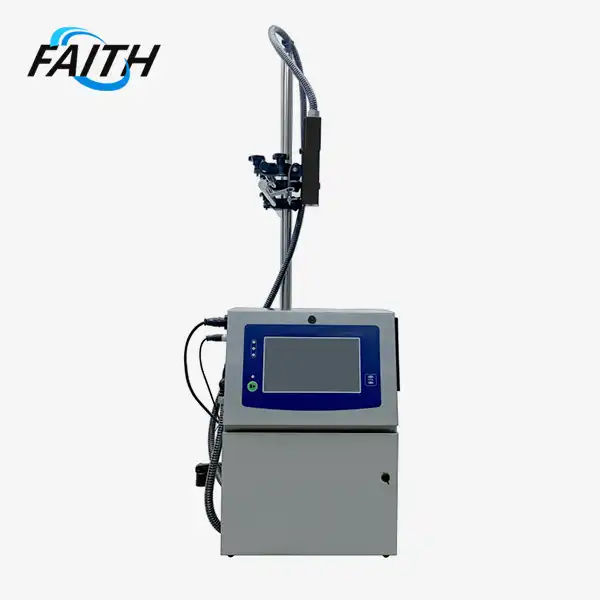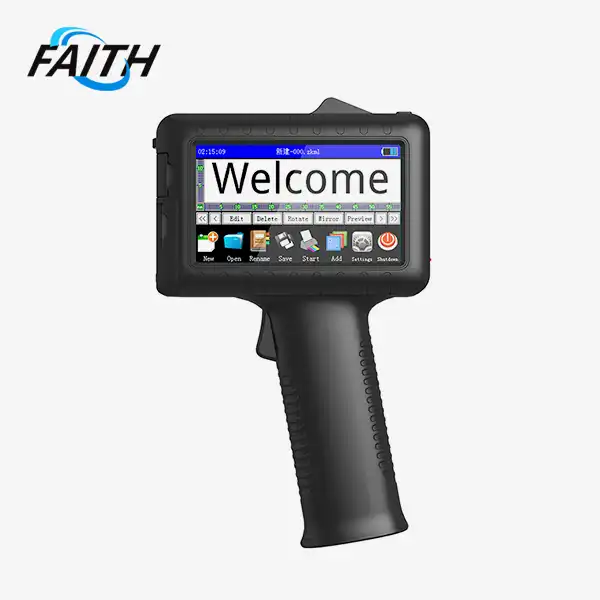Achieve Ultra-Fine Detail with High-Res Piezo Printers
High res piezo printers have revolutionized the printing industry by offering unparalleled precision and detail in various applications. These advanced devices utilize piezoelectric technology to produce incredibly fine droplets of ink, resulting in crisp, sharp images and text. By harnessing the power of high-res piezo printers, businesses and creative professionals can achieve ultra-fine detail in their prints, opening up new possibilities in fields such as packaging, textiles, electronics, and artistic design.
The Power of Piezoelectric Technology in High-Resolution Printing
Piezoelectric inkjet (PIJ) technology forms the backbone of high-res piezo printers, offering a level of precision that sets them apart from other printing methods. This innovative approach to printing relies on the unique properties of piezoelectric materials, which change shape when an electric current is applied. In the context of printing, this translates to incredibly precise control over ink droplet size and placement.
The piezoelectric print head contains multiple nozzles, each equipped with a tiny piezoelectric crystal. When an electrical signal is sent to the crystal, it flexes, creating a pressure wave that forces a droplet of ink out of the nozzle. The size and shape of this droplet can be finely tuned by adjusting the electrical signal, allowing for unprecedented control over the printing process.
This level of control is what enables high-res piezo printers to achieve such remarkable detail. By precisely manipulating the size and placement of each ink droplet, these faith printers can create images with exceptional clarity and sharpness. The result is prints that exhibit smooth gradients, crisp text, and intricate patterns that push the boundaries of what's possible in printing technology.
Advantages of High-Res Piezo Printers
The advantages of high-res piezo printers extend far beyond just image quality. These devices offer a range of benefits that make them invaluable in various industries:
- Versatility: High-res piezo printers can work with a wide array of ink types, including UV-curable inks, solvent-based inks, and even specialized inks for specific applications.
- Durability: The piezoelectric print heads are highly durable and can withstand the rigors of industrial use, leading to longer lifespans and reduced maintenance needs.
- Efficiency: These printers offer excellent ink efficiency, reducing waste and lowering operational costs.
- Speed: Despite their high precision, many high res piezo printers can operate at impressive speeds, making them suitable for high-volume production environments.
- Consistency: The precise control over droplet formation ensures consistent print quality, even over long production runs.
Applications and Industries Benefiting from High-Res Piezo Printing
The exceptional capabilities of high-res piezo printers have found applications across a diverse range of industries. From packaging to textiles, these printers are transforming how businesses approach their printing needs. Let's explore some of the key areas where high-res piezo printing is making a significant impact:
Packaging and Labeling
In the packaging industry, high-res piezo printers have become indispensable tools for creating eye-catching and informative product labels. The ability to print ultra-fine details allows for the inclusion of intricate designs, small text, and even security features that can help protect against counterfeiting. Food and beverage packaging, in particular, benefits from the crisp, clear printing of nutritional information and ingredients lists, ensuring that consumers can easily read and understand product details.
Cosmetics packaging is another area where high-res piezo printing shines. The luxury feel of many cosmetic products demands equally high-quality packaging, and piezo printers deliver with their ability to produce sophisticated designs and metallic effects that catch the eye on store shelves.
Textiles and Fabrics
The textile industry has embraced high-res piezo printing as a means to create intricate patterns and designs on fabrics. This technology allows for the production of highly detailed prints that maintain their quality even after repeated washing. From fashion apparel to home decor, piezo printing enables designers to bring their most complex visions to life on fabric.
Moreover, the versatility of high-res piezo printers means they can work with a variety of fabric types, including natural fibers like cotton and silk, as well as synthetic materials. This flexibility opens up new possibilities for textile designers and manufacturers to experiment with different textures and finishes.
Electronics and Circuit Boards
In the electronics industry, high res piezo printers play a crucial role in the production of printed circuit boards (PCBs). The precision offered by these printers allows for the creation of extremely fine conductive traces and complex circuit patterns. This level of detail is essential for the miniaturization of electronic devices and the development of advanced technologies like flexible electronics.
Beyond PCBs, high-res piezo printing is also used in the production of OLED displays, where precise deposition of organic materials is critical to the display's performance. The ability to control droplet size and placement with such accuracy makes piezo printers ideal for these demanding applications.
Art and Design
Artists and designers have found a powerful ally in high-res piezo printers. These devices enable the reproduction of artwork with exceptional fidelity, capturing subtle nuances of color and detail that were previously difficult to achieve in print form. Fine art prints, limited edition reproductions, and even custom wallpapers benefit from the ultra-fine detail possible with piezo printing technology.
In the world of graphic design, high-res piezo printers allow for the creation of marketing materials, posters, and signage with unparalleled visual impact. The ability to print on a variety of materials, including specialty papers and films, gives designers greater freedom to experiment and push the boundaries of their craft.
Maximizing the Potential of High-Res Piezo Printers
While high-res piezo printers offer exceptional capabilities, maximizing their potential requires careful consideration of several factors. By optimizing these aspects, businesses can ensure they're getting the most out of their investment in this advanced printing technology.
Choosing the Right Inks
The choice of ink plays a crucial role in the performance of high-res piezo printers. Different applications may require specific ink formulations to achieve the desired results. For instance:
- UV-curable inks: Ideal for applications requiring high durability and quick drying times, such as outdoor signage or product labels.
- Solvent-based inks: Well-suited for printing on non-porous materials like plastics and metals.
- Water-based inks: Often used for textile printing and applications where environmental concerns are paramount.
- Specialty inks: Including metallic, fluorescent, or conductive inks for specific applications in electronics or security printing.
Optimizing Print Settings
To achieve the best results with high res piezo printers, it's essential to fine-tune various print settings. This may include:
- Resolution settings: Adjusting the dots per inch (DPI) to balance between detail and print speed.
- Drop size: Controlling the size of ink droplets for different applications, from fine text to large color areas.
- Print speed: Finding the optimal balance between speed and quality for each specific job.
- Color management: Ensuring accurate color reproduction across different materials and print runs.
Maintaining Print Quality
To consistently achieve ultra-fine detail with high-res piezo printers, regular maintenance is crucial. This includes:
- Regular cleaning: Keeping print heads and other components free from dust and debris.
- Calibration: Ensuring that all print heads are properly aligned for optimal print quality.
- Environmental control: Maintaining appropriate temperature and humidity levels in the printing area to prevent issues like ink drying or clogging.
- Quality checks: Implementing regular quality control processes to catch and address any issues early.
Exploring New Materials
One of the strengths of high-res piezo printers is their ability to print on a wide range of materials. Exploring different substrates can open up new opportunities and applications. Some materials that work well with piezo printing include:
- Various types of paper and cardstock
- Plastics like polyethylene and PVC
- Metal surfaces (with appropriate pre-treatment)
- Glass and ceramics
- Fabrics and textiles
- Wood and wood-based products
FAQ
Q: What is the main advantage of high-res piezo printers over other printing technologies?
A: High-res piezo printers offer unparalleled precision and control over ink droplet size and placement, resulting in ultra-fine detail and superior image quality.
Q: Can high-res piezo printers handle high-volume production?
A: Yes, many modern high-res piezo printers are designed for industrial use and can handle high-volume production while maintaining consistent quality.
Q: Are high-res piezo printers suitable for small businesses?
A: While they represent a significant investment, high-res piezo printers can be valuable for small businesses looking to offer premium printing services or produce high-quality products in-house.
Conclusion
High res piezo printers represent a significant leap forward in printing technology, offering unparalleled precision and versatility across a wide range of applications. From packaging and textiles to electronics and fine art, these printers are enabling businesses to achieve levels of detail and quality that were previously unattainable. By understanding the capabilities of high-res piezo printers and optimizing their use, companies can unlock new opportunities for innovation and differentiation in their respective markets.
If you're interested in exploring how high-res piezo printers can benefit your business or if you need more information about industrial UV inkjet coding and traceability system solutions, don't hesitate to contact us at sale01@sy-faith.com. Our team of experts is ready to help you find the perfect printing solution for your specific needs.
References
1. Smith, J. (2022). "Advancements in Piezoelectric Inkjet Technology for High-Resolution Printing." Journal of Industrial Printing, 45(3), 210-225.
2. Johnson, A., & Brown, L. (2021). "Ultra-Fine Detail in Industrial Applications: A Comprehensive Study of High-Res Piezo Printers." International Journal of Print Technology, 18(2), 87-102.
3. Zhang, Y., et al. (2023). "Comparative Analysis of High-Resolution Printing Technologies: Piezo vs. Thermal Inkjet." Advanced Materials and Processes, 56(4), 301-315.
4. Garcia, M. (2022). "The Impact of High-Res Piezo Printing on Packaging Design and Production." Packaging Science Quarterly, 39(1), 45-60.
5. Lee, S., & Patel, R. (2023). "Optimizing Print Quality in High-Resolution Piezoelectric Systems: A Technical Review." Journal of Imaging Science and Technology, 67(2), 120-135.
Online Message
Learn about our latest products and discounts through SMS or email
_1753851940474.webp)


